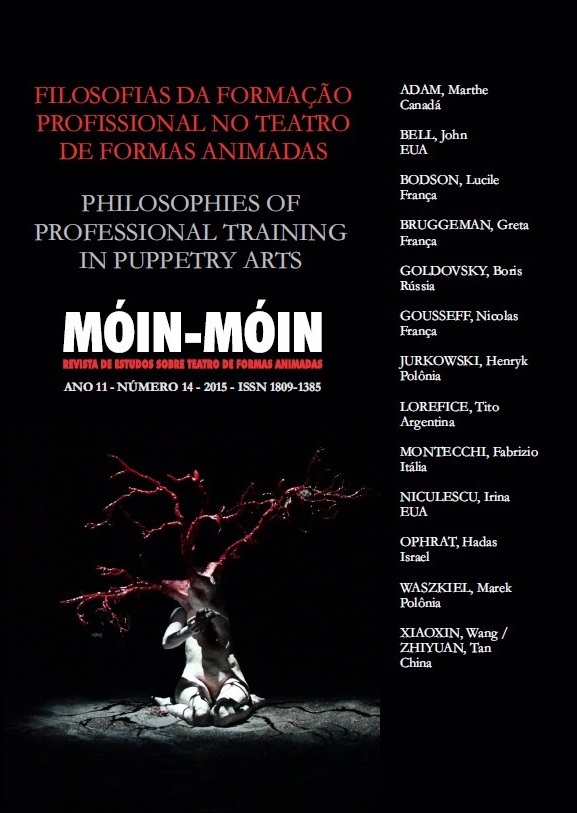The Story and the Telling – Perspectives on Training in Contemporary Puppetry
DOI:
https://doi.org/10.5965/2595034702142015135Abstract
Quality design and virtuoso performance do not always produce a good play.
They are not enough; neither is the sum total of the stage elements. Staging is a craft primarily focused on constructing complex evolving relationships between the various elements: between the story and the interpretation, the puppets and the performers, the characters and their function, and between the story and the narration. This article looks at the teaching practices established by Ophrat through four exercises dealing respectively with (a) the function of the body as it reflects on the relationship of the performer and the puppets, (b) the separated use of sound and action, being originated from different sources,
(c) The idea of duality of the puppet as major dramatic role, and (d) understanding that everything in puppet theater can be manipulated, including space.
Keywords: Visual Theater. Story telling. Object-subject.
Downloads
Downloads
Pubblicato
Come citare
Fascicolo
Sezione
Licenza
Ao submeter um artigo à Móin-Móin Revista de Estudos Sobre Teatro de Formas Animadas e tê-lo aprovado os autores concordam em ceder, sem remuneração, os seguintes direitos à Revista: os direitos de primeira publicação e a permissão para que a Revista redistribua esse artigo e seus metadados aos serviços de indexação e referência que seus editores julguem apropriados.
Os artigos cujos autores são identificados representam a expressão do ponto de vista de seus autores e não a posição oficial da revista Móin-Móin.
Plágio, em todas as suas formas, constitui um comportamento antiético de publicação e é inaceitável. A Revista Móin-Móin reserva-se o direito de usar software ou outros métodos de detecção de plágio para analisar os trabalhos submetidos.
![]()
Este obra está licenciado com uma Licença Atribuição-NãoComercial 4.0 Internacional






